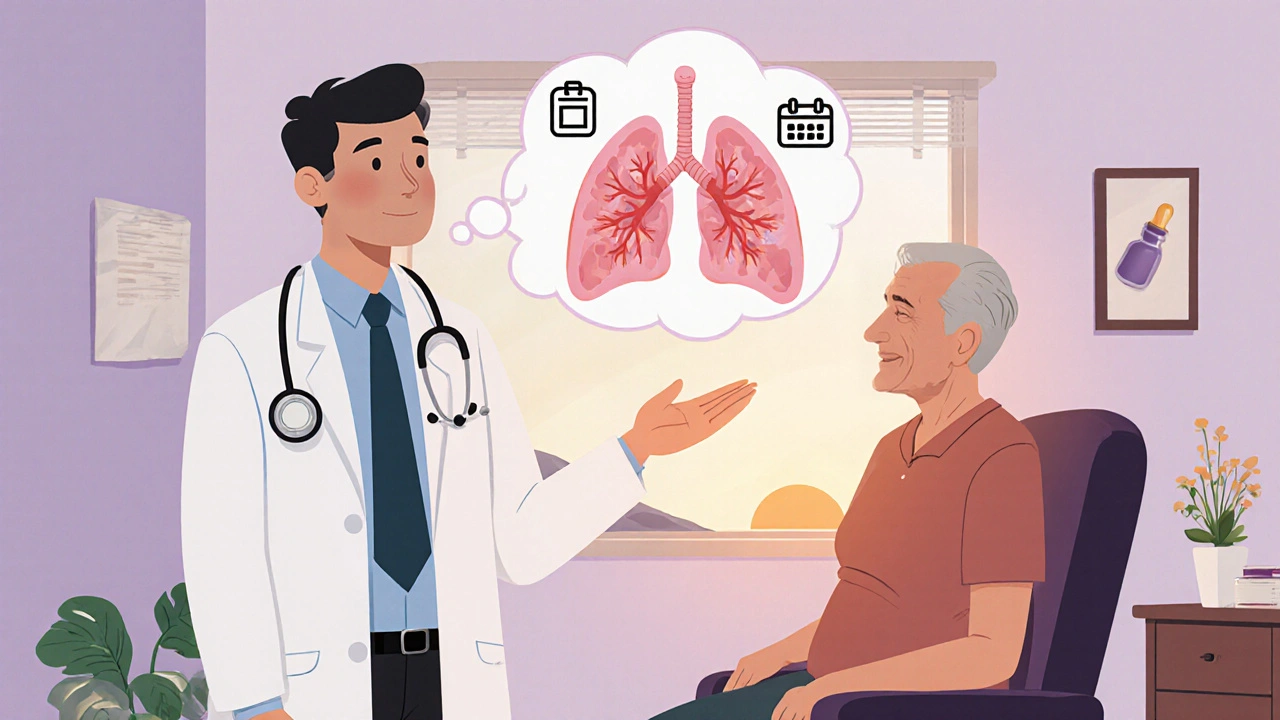Pirfenidone – What It Is, How It Works, and Why It Matters
When working with Pirfenidone, an oral antifibrotic medication approved for idiopathic pulmonary fibrosis (IPF). Also known as Esbriet, it slows lung scarring by targeting fibroblast activity and reducing inflammatory pathways. Pirfenidone has become a cornerstone in modern IPF therapy, offering patients a chance to preserve lung function and quality of life.
Key Related Concepts
One of the main conditions Pirfenidone tackles is Idiopathic Pulmonary Fibrosis, a chronic, progressive lung disease characterized by irreversible scarring of the alveolar tissue. Also called IPF, it leads to shortness of breath and reduced oxygen exchange. Because IPF involves uncontrolled fibrosis, Pirfenidone is prescribed to interrupt the cycle of tissue injury and repair. This relationship forms a clear semantic triple: Pirfenidone treats idiopathic pulmonary fibrosis.
The drug belongs to the broader class of Antifibrotic therapy, treatments that aim to halt or reverse the formation of excess fibrous connective tissue in organs. Within this class, drugs like nintedanib also compete, but Pirfenidone’s unique mechanism—modulating cytokine production and oxidative stress—sets it apart. Antifibrotic therapy therefore requires careful dosing and monitoring to balance efficacy with tolerability, which leads to another triple: Antifibrotic therapy reduces lung scarring.
Clinical research drives how clinicians use Pirfenidone. Recent clinical trials, rigorous studies evaluating safety, dosage, and long‑term outcomes have confirmed that a daily dose of 2400 mg improves forced vital capacity (FVC) decline rates compared to placebo. These trials also highlight common side effects—photosensitivity, gastrointestinal upset, and liver enzyme elevations—prompting physicians to schedule regular liver function tests. The link between studies and practice creates a third triple: Clinical trials evaluate drug efficacy.
Understanding side effects is vital for patient adherence. When patients experience nausea or rash, dose adjustments or co‑administration with meals can mitigate discomfort. Moreover, counseling on sun protection helps reduce photosensitivity reactions, a frequent complaint. By addressing these issues early, healthcare providers improve compliance, translating into better disease management. This establishes the final semantic triple: Side effects influence patient compliance.
Below you’ll find a curated collection of articles that dig deeper into Pirfenidone’s dosing strategies, real‑world patient experiences, comparison with other antifibrotics, and the latest guideline updates. Whether you’re a clinician seeking practical tips or a patient looking for understandable information, the posts ahead cover the full spectrum of what you need to know about Pirfenidone and its role in fighting lung fibrosis.
Esbriet (Pirfenidone) vs Other IPF Drugs: Full Comparison Guide
A detailed comparison of Esbriet (pirfenidone) with nintedanib and other IPF treatments, covering efficacy, side effects, dosing, cost and practical tips.
Read more
